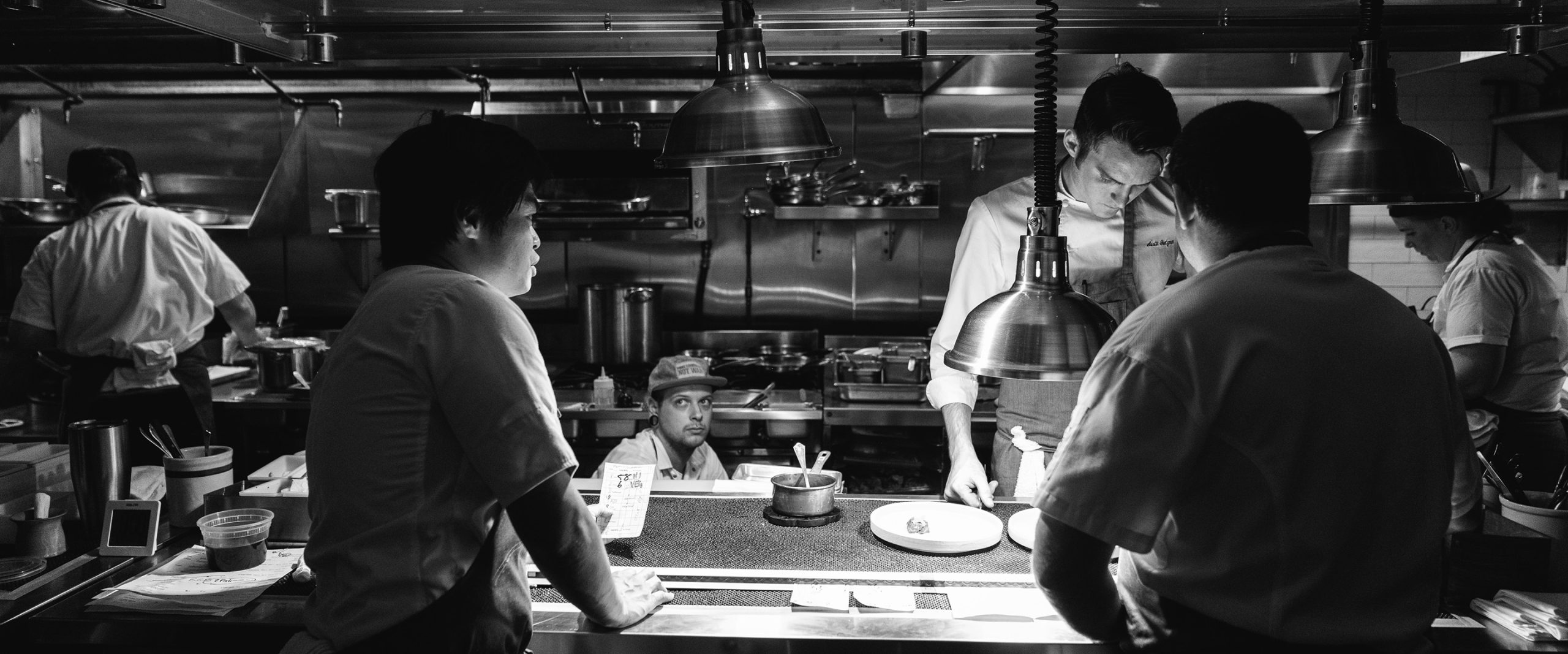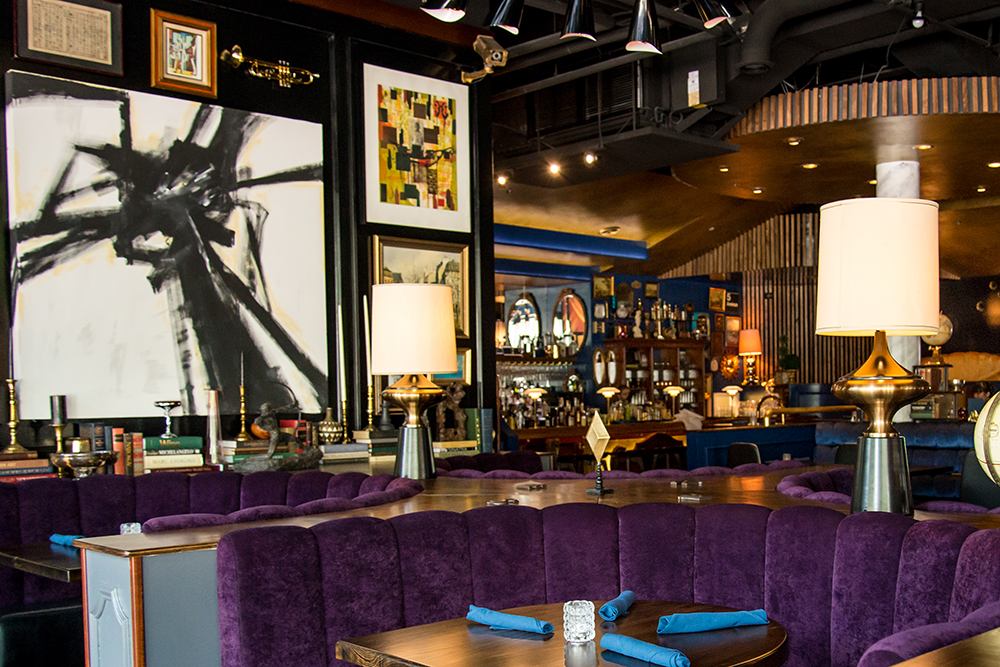But really, is anyone surprised?
American kitchen and service staff have historically been treated with less respect than those jobs deserve; "get a real job" is still a de facto rebuttal irate consumers defer to. Then there's the behind-the-scenes culture to consider, as we look at how quickly the #metoo movement swept through the restaurant industry. Toxic restaurant culture has been called out in the past several years, whether via lawsuits and litigation or scathing tell-alls, knocking many a chef off their still-shiny, relatively new "celebrity" pedestals - a designation that is still a fairly recent phenomenon.
Now, as tips dip with one in five Americans surveyed admitting to tipping less due to inflation, it's even less of a wonder that "staff shortage" is the new hand-wring of restaurateurs and diners across the country. And it'll only get worse as demand explodes. Sales from 2022 reflect an increase of 12.5% from 2021 and $97 billion in growth is expected for 2023 on top of that, which means more work on the shoulders of fewer folks.
In short, the old adage that good help is hard to find has never been more true, and now, good help is harder still to keep.

A corn dessert from the vegetarian menu at Lazy Betty in Atlanta, where chef-owner Ron Hsu factors equitable wages into menu pricing. Photo Credit: Andrew Thomas Lee.
All of this begs the question, how do restaurant owners make working in this industry (pun intended!) palatable anymore within the confines of the ultra-slim profit margins and massive overheads of operating a restaurant?
Well, creatively. Forking the system and changing the way they approach a practice many call racist and antiquated. We're talking about tipping.
Making Change, From Front to Back
Let's rewind real quick and talk about why tipping is such a hot button topic within the industry.
It's well known that frontline service staff make pretty much all of their money on tips. What is lesser known is that the hourly minimum wage restaurants are required to pay them is, as Douglas Hines, co-owner of the original The Consulate in Atlanta phrases it, "something ridiculous" - poverty pay that's given the slightly more softened label of "sub-minimum wages," which may be more in some states than others but stands at an embarrassing $2.13 per hour federally should an employee exceed over $30 a month in tips.
As lousy as that sounds, despite the back of house (BOH, for short) kitchen staff making, at the very least, their state's minimum wage, front of house still out-earn them significantly - even though they technically make more. However, they traditionally have no way to advance their income as their pay remains the same regardless of the restaurant's performance.
This entire system is decried as inherently unfair and inequitable. Claire Macfarlan Johnson, Director of Operations and Sales of The Wool Factory in Virginia observes, "Historically, our industry has relied on a low-wage system that expects the majority of take-home pay for front of house staff to come from tips. This system has proven problematic in a myriad of ways. Not only does it create a feast or famine income for servers, but it also forces an inherent discrepancy between front and back of house compensation," which can lead to rivalry and resentment within the staff when the difference is - as it often is - significant.
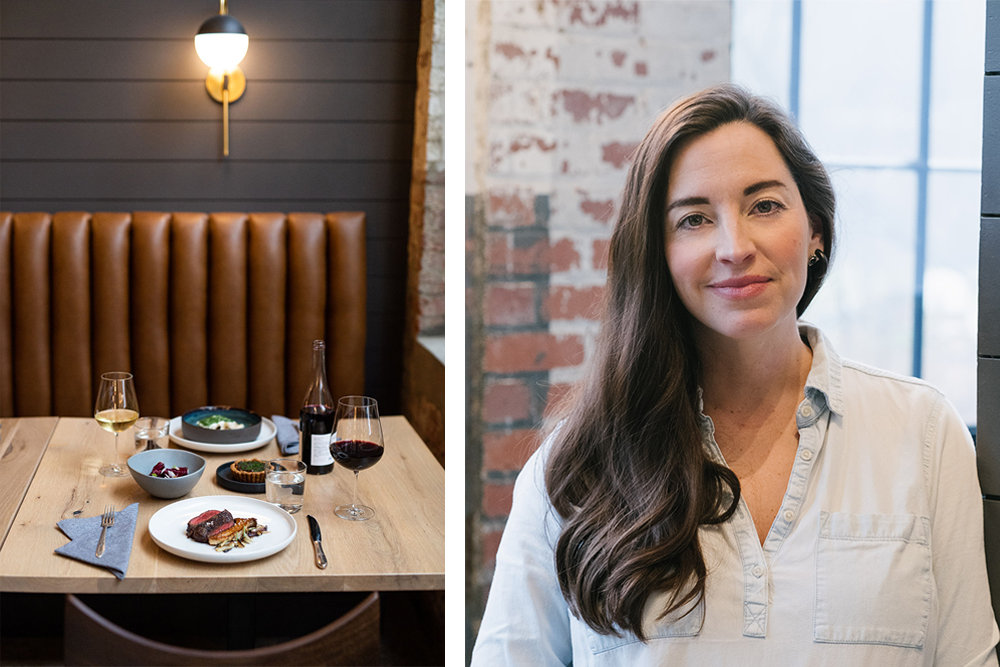
Claire Macfarlan Johnson (pictured right), Director of Operations and Sales at The Wool Factory in Virginia, which includes the fine dining restaurant Broadcloth (pictured left). Photo Credit: The Wool Factory.
For example, Devon Sanner, chef-owner of Tucson's Zio Peppe recalls, "Coming up as a line cook making $7.25 an hour when I first started, having just left a teaching position where I was clearing over $40,000 a year with benefits, I remember services where I'd have just finished a 13-hour day, and a server could walk out with more than $400 for less than 5 hours of work." He quickly follows up saying, "Great servers do work very hard and they engage in emotional labor of a different nature than BOH. I'm not at all diminishing the work that good servers do. I'm simply saying that the disparity has heretofore been egregious, and if one wants to attract and retain quality cooks and dishwashers, one has to create a system where they also reap the benefits."
His is one of the loudest types of voices on this matter: those who have climbed up the ranks from before the stove. Because as ownership has shifted to chefs versus corporate investors/restaurateurs, there are many who are attempting to lead by example, taking on the challenge of bucking this broken system within their organizations. Chef-owners who are invested in their people, acting as generals whose ultimate goal is to see their brigade, from frontlines to the back, to economic safety at the end of each day.
Taking Tipping Off the Table ... And Putting It On the Bill
For many restaurant owners, this means turning tips into service fees. This protects their team twofold. First, it ensures their service staff were getting paid at all. After COVID, The Consulate found itself at the tough end of a new problem as, "People would literally not leave tips. We thought it was a joke at first, when tables would leave a $5 bill on a $200 tab. But day after day, it kept happening. Didn't matter the demographic; people just stopped tipping and we were in shock," Hines said. Realizing something had to be done, especially since there are no laws in place to protect her staff from stiffed tips, chef-owner Mei Lin quickly established a policy of instituting a default charge of 18% to every bill, regardless of party size.
The Wool Factory's fine dining outlets, Selvedge Brewing and Broadcloth, had also set their rate for 18%, which was part of their opening premise. "A service fee is our attempt to reduce variability for our front of house staff, and also to equitably compensate our entire team," Macfarlan Johnson explains.
For both, couching it as a service charge as opposed to a mandatory tip makes it fully legal, akin to cover charge or a seating fee, a practice that has long been in place in Europe. The difference, though, is that their establishments distribute the entire line item - plus whatever extra is added, gently encouraging the additional 2% to bring it up to the standard 20 - to their teams and do not take a cut, even though it's technically not illegal (but certainly unethical) to do so. "You can expect a restaurant that takes the tip credit for sub-minimum wage and/or claims the service charge and doesn't give it back to have high turnover," chef-owner Ron Hsu of Lazy Betty says wryly.
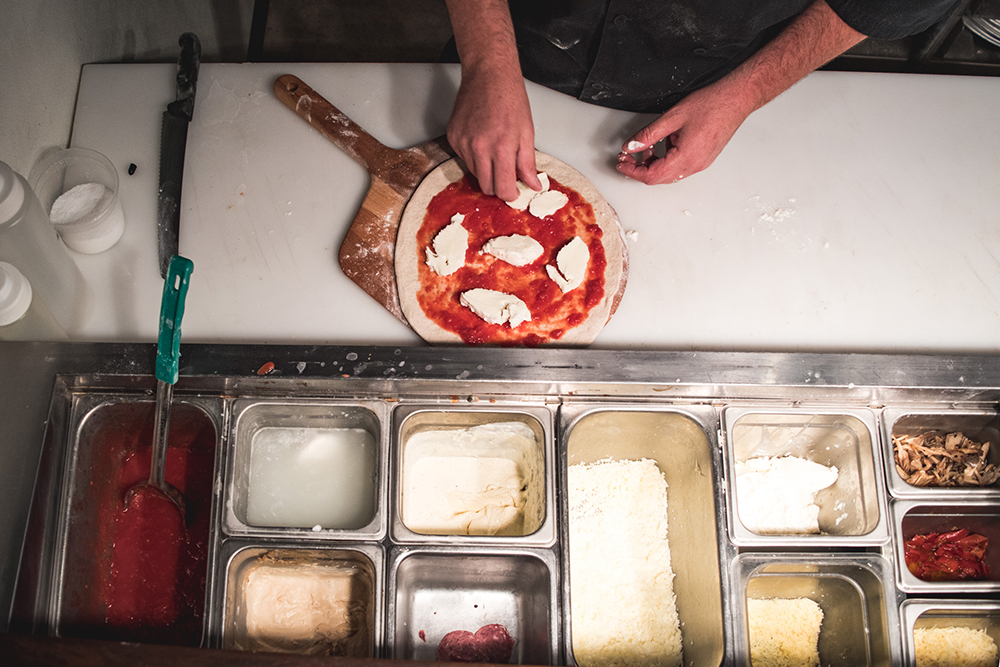
Making pizza at Zio Peppe in Tucson, where the equitable pay practice of tip pooling is not yet legal in the state of Arizona. Photo Credit: Jackie Tran.
On the other hand, those who give it back fairly, like The Consulate, take great pride in their employee retention. Lin explains the full circle, "We hire people who justify the 18% rate and this minimum gratuity, which guarantees their income and shows we take care of our people, attracts more experienced servers."
The second way their staff benefits is that the restaurateurs are now free to pool tips with the BOH - something that, pending legislation, is illegal in certain states like Arizona, Sanner shares. In fact, this restriction is why he opted for a counter-service business model for his otherwise full-service restaurant, in an effort to provide more equitable pay in a more team-oriented environment.
How it's distributed can vary. At The Consulate, 6% of the day's service charges go to the expo and runner, along with the busser. At Selvedge and Broadcloth, "all hourly employees receive the same percentage of the pool, weighted based on the number of hours they work," says Macfarlan Johnson.
Line-iteming a service charge is one way to ensure consumers are tipping appropriately. Doing away with tipping entirely is another. And according to a recent survey, 60% of Americans are supposedly on board.
While getting rid of tipping sounds counterintuitive, it's actually not. It becomes a matter of baking the cost of labor into the menu pricing, which is where that qualifier of "supposedly" comes into play. Because when push comes to shove, many are unwilling to embrace what comes with it, such as more limited service (e.g. counter service) and higher menu prices. Regardless, leaders in the battle for food service employee rights are marching on.
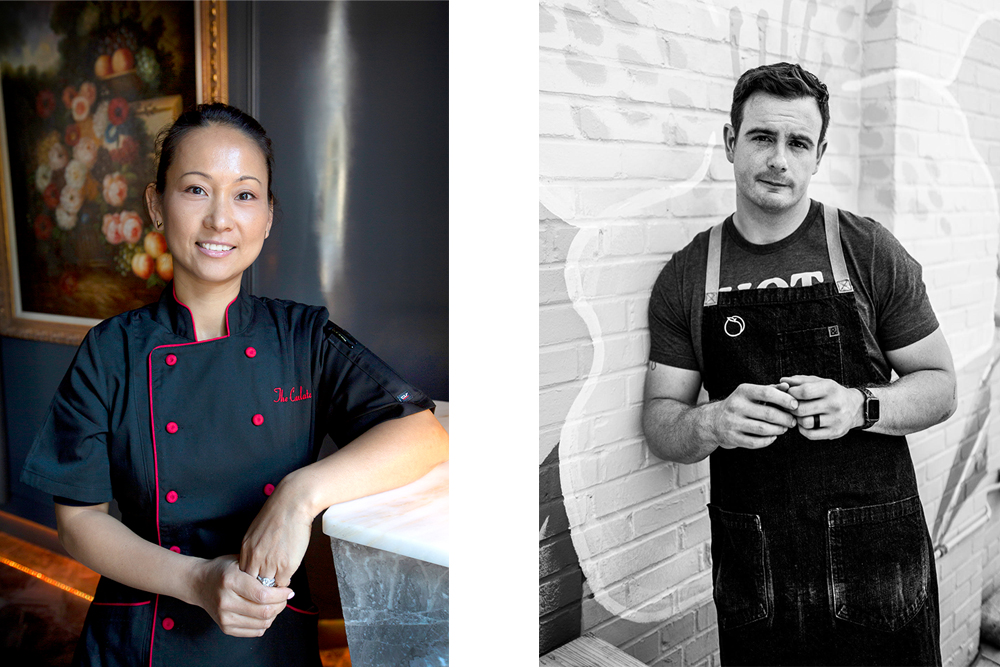
Chef Mei Lin (pictured left) co-owns the Consulate in Atlanta with Douglas Hines. Photo Credit: The Consulate Restaurant. Joey Ward (pictured right) is chef-owner of Southern Belle and Georgia Boy, both in Atlanta. Photo Credit: Brian Manley.
For example, multi-time James Beard nominee Hsu and fellow Atlantan and chef-owner Joey Ward of Southern Belle + Georgia Boy make no bones about the fact that gratuities are already baked into their menu pricing. What you see is what you pay ... that is, unless you want to pay more, which many often do for exemplary service. In Hsu's experience, "We find that 30 - 40% of guests still leave an additional tip," which is similarly distributed across the front and back of house. Ward concurs, noting a large portion of his guests "go out of their way to 'tip extra' even though we inform them of our policy."
There are multiple ways to build higher staff payout into the menu. Hsu sees it as an opportunity system. "You're essentially giving your staff a percentage of the sale. And if you want to get very specific, you can granularize it by allocating a certain percentage toward categories. Or, for instance, if you really wanted to increase beverage sales, then say, 100% goes to the servers. Kind of like a commission system," he explains. "It's not exactly what we do at Lazy Betty, but an example of how you can use service charges" - and included tips - "to drive targeted sales."
While's Ward's compensation and distribution model is equally nuanced, his pricing approach is a simple one. "We've adopted a service-inclusive model where 25% is added to the [previous] price of the meal," he says, a number he arrived at based on the gratuities guests have historically left in the two years prior to the elimination of tips. "The overall price of dining at Southern Belle + Georgia Boy remains unaltered as the price of the check remains in line with what the team made," making the higher per-person sticker price easier for his clientele to digest. "While this dramatic change from the status quo was initially a response to the business demands and appetites of the pandemic fine diner, we have maintained it for over a year and continue to see steady income, moderate staff turnover, great feedback from our guests, and no reason to believe it cannot be sustainable for the long term," Ward says with optimism.
Ultimately, that's the hardest pill for consumers to swallow when it comes to tip-inclusive service. "I personally think building the tip into the price is better as guests don't feel like it's an additional cost. However, this can be hard for the business as public perception becomes that we're much more expensive than similar restaurants," Hsu shares.
However, the fact that Ward and Hsu's flagship restaurants are fine dining establishments, has likely contributed to their model's success. According to a USA Today story featuring Ismael Karabas, a marketing professor at Murray State University, "in the research he did with other academics ... they found that when the check was high, consumers no longer felt as irritated by tip requests." In other words, when diners are already prepared to pay more for their experience, they're likely relieved at a "cleaner" bill, where no messy math is required. That's left to Hsu and Ward as they calculate the distribution of the tips between all members of their staff.
In all cases, the benefits to the overall organization are great. Setting established tip percentages is essentially profit-sharing for all of the restaurant's employees, which provides incredible incentive to every player on the team to rally around the single goal of the restaurant's success. Now, all of their livelihoods hinge on that more equally. Not only are there more touches to each table as wait staff ensures that all tables are well-served, but the kitchen staff isn't just churning out dishes - they know that how well they fulfill the order will impact what they take home at the end of the day.
Getting Everyone On "Full Board"
Both models for tip inclusivity have their detractors. And sometimes, the call comes from inside the house.
"Internally, you must make sure key players on staff are 'cheerleaders' for the model," Ward says. "The largest pushback will likely be from FOH, who are used to making a ton of money on busy nights. It's important the base hourly wage you're paying them is sufficient to sustain them through slower business levels, reminding them all boats will rise when business levels increase."
Hsu echoes that hurdle. "Our staff was apprehensive, because with pooling, they have to trust that their tips are being properly split and distributed." With assurance and understanding, as Lin said, mandated or included tips actually become a selling point for staff - the luxury of guaranteed income in an industry that is normally at the mercy of a customer's mood. Macfarlan Johnson says, "We discuss our policies in detail with each prospective employee and they've appreciated the income stability. They're not burdened with the stress of significant income peaks and valleys."
That's not to say servers become complacent. It can even become an motivator for even higher gratuities and result in truly outstanding service, in Lin's experience. For instance, although 20% is fairly standard, she's heard that 15% is considered an acceptable minimum tip from some customers, and uses that as justification to ask her team to deliver above-minimum service and aim for that extra 2% or more. Either way, employees feel secure and are able to focus on the experience they're providing rather than sweating an unknown income.
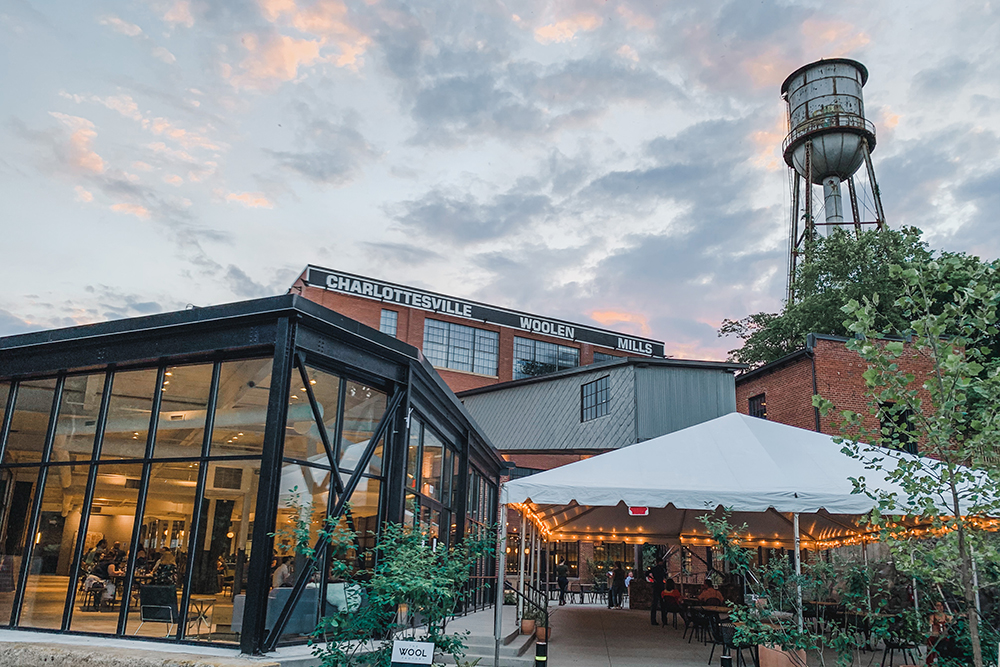
The Wool Factory in Charlottesville comprises a brewery/taproom (Selvedge), a fine dining establishment (Broadcloth), and a boutique wine and coffee shop (The Workshop). Photo Credit: The Wool Factory.
As far as consumers go, in social media restaurant groups, the outrage over service fees, from credit card to healthcare contribution transparency - a trend that's also made headlines - is vociferous. The prime argument from diners is always the same: "Just pay your staff more!" They don't like to be told what to do and resent mandated gratuities for the symbolic loss of freedom, as well as the pre-spent cash. Meanwhile, in the face of inflation, they also don't want to pay more for their meal.
However, without diners to subsidize the pay of serving staff, Hines argues, "no one will have any restaurants to eat at. With food costs, rent, licenses, worker's comp, and for some, health benefits, there's no profit left and that's why, as they say, one of ten restaurants fail." But the truth is that the customers are paying for the salaries of those who work in restaurants. However, the missing link is that it's the same as any other business.
"In almost every industry, the cost of labor is included in the price of the product. It's only because of antiquated laws in America and the tipping culture that this is not the case for restaurants," Hsu says.
As Ward muses, "The mindset of tipping in our country must be shifted away from the guest supplementing a person's salary based on if they did a good job or not by that guest's standard. We are consumers of a 'dining out experience;" the idea that you would ask for your money back or to pay less than the asking price for a movie ticket or concert is preposterous. The costs of paying the usher, the lighting direct ... are all included in the asking price ... you certainly couldn't expect the box office to cut the usher's wages."
The benefit for customers of tip-inclusive totals is small but straightforward: it takes the guesswork out of the checkwork, and removes the stigma of being a good or bad tipper. Hines says, "It makes it easier for the guest when they can just pay the tab. When anybody goes out to dine, there's always that minute or two and awkwardness of factoring in that tip." And for restaurants like Lazy Betty and Southern Belle + Georgia Boy, it eliminates sticker shock.
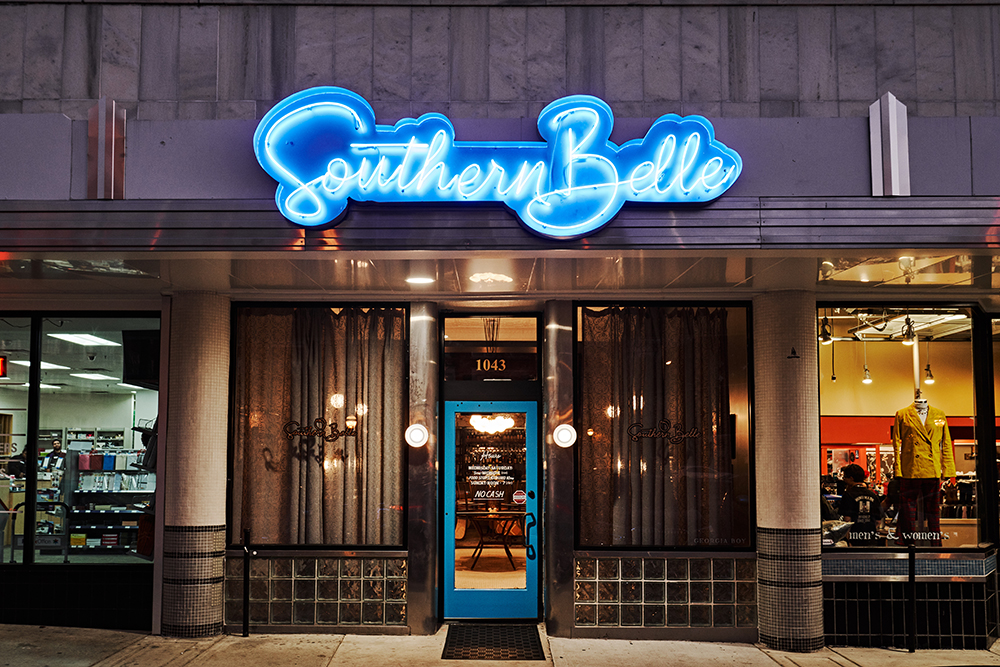
The entrance to Atlanta's Southern Belle. Photo Credit: Andrew Thomas Lee.
How to Make It Work
Ultimately, for all parties, the best advice these pioneering restaurateurs and equity warriors is the same: clear communication. This is the only way to be successful when implementing set percentage incomes for service staff and tip pooling with kitchen staff.
"Know your market and staff, provide education to staff and guests so that they know the policies, how much the service charge is if there is one or if tips are not expected," Hsu advises. Macfarlan Johnson adds, "Communicate our service fee and tip policy anywhere and everywhere we can," and she credits that for receiving more praise than pushback from the public and her team. Lin, Hines, and Ward have also turned the tables on initial resistance by splashing this information all over their website and menus to ensure that their customer base is absolutely clear on expectations ... and standing firm on them. For Hines, that's meant having the tough conversations, reiterating, "It is a service fee. Not gratuitous. Meaning, if you dine here, you abide by our rules."
Regardless, "The best way forward is shared knowledge," says MacFarlan Johnson. And perhaps it starts right here, with this story.
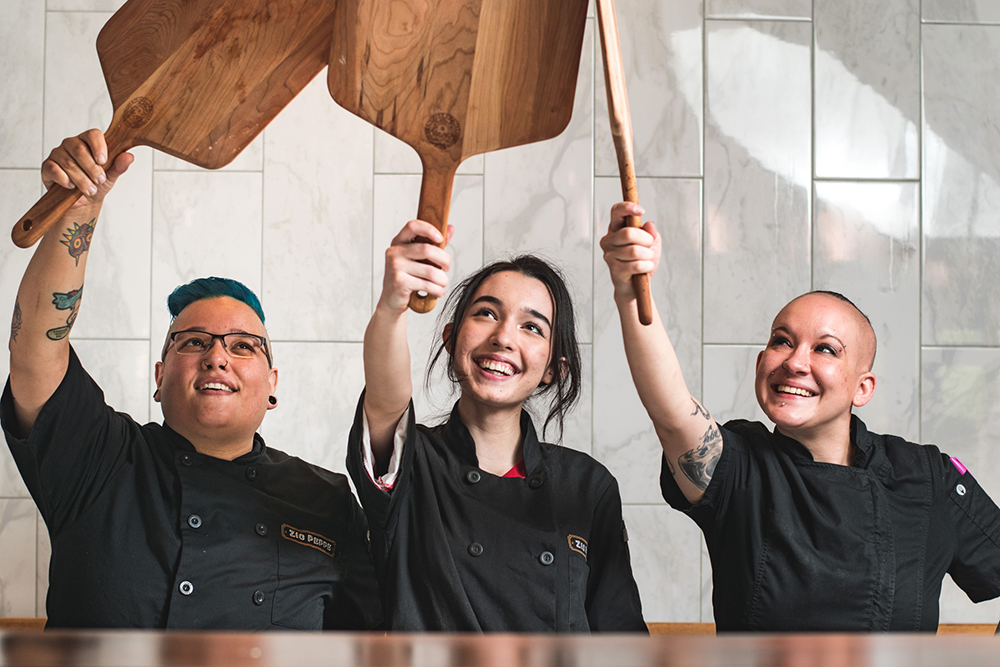
The Pizza Riot: Zio Peppe's opening pizza crew (left to right) Koda, Sam Parisi, Steph Molina. Photo credit: Jackie Tran
Su-Jit Lin is a storyteller first and everything else second. Her work has been featured on Thrillist, PEOPLE, Al Jazeera, Folks, Longreads, The Spruce Eats, Yummly, AllRecipes, The Kitchn, Ravishly, AAA Magazine editions, Edible Long Island, Where Y'at, and others. Her person, however, can be found traveling for food, working off the food at the gym or on some type of adventure, or writing essays about all of the above and how they shape the human experience.
Featured Photo of the kitchen at Lazy Betty by Andrew Thomas Lee









